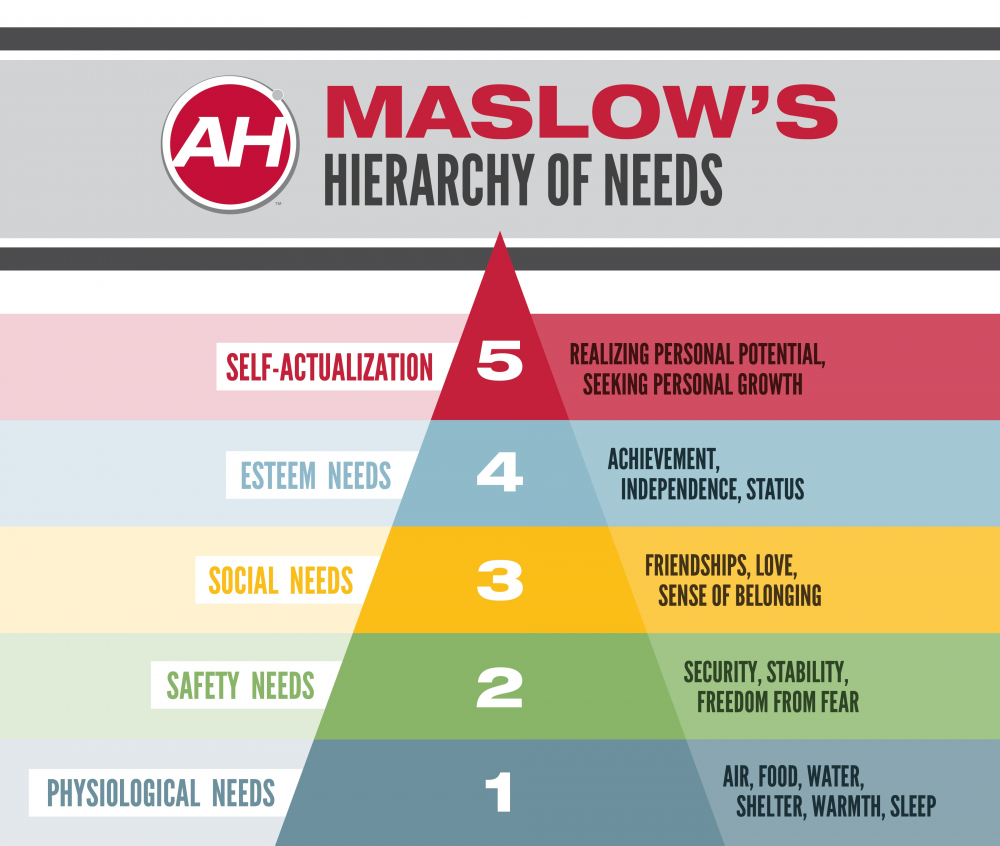Fulfill members' needs and increase engagement
Associations provide a unique combination of togetherness and advancement of their career, cause, or mission. Not only may a member join in search of a community filled with like-minded individuals, they may simultaneously look for challenges or ways to advance their careers or personal endeavors.
While the motivation for becoming a member of an association may vary by individual, there exists driving forces in the background that consistently draw prospects to associations and keep them there as long-term members. To better understand those driving forces and develop a culture that benefits all members, an association may look to the field of psychology and Abraham Maslow.
Maslow’s Hierarchy
In 1943, Maslow published a paper that theorized humans possess innate needs to achieve self-fulfillment. Called Maslow’s Hierarchy, the five levels to a person’s needs outlined by Maslow are: psychological, safety, social, esteem, and self-actualization.

According to Maslow, levels 1 and 2 involve basic needs such as stability and food. Yet as those needs are met, a person, in general, may strive for higher levels on the hierarchy. For associations, these more personal levels of fulfillment are where they may make their largest impact.
However, for any association, fulfilling that need may be challenging due to, simply, time. As discussed in “Forget History- Remain Relevant: the Keys to Membership Retention,” associations have “typically a 60-day window with new members in which they decide they’ve made the best investment and so they renew, or the worst and they don’t.” Sixty days isn’t long, but it’s the most important time to show members the association’s positive impact on members.
Reach Higher Levels of Member Fulfillment
By their very function, associations strive to fulfill levels 3-5, or from social to actualization, within the hierarchy. To tap into those levels is the association’s best chance at retaining lifelong members:
Networking: Networking events are a great way to create a sense of community and belonging (level 3). Host events where members can get to know one another, form relationships, and share similar interests. Virtual events are a great way to make networking available to members who span great distances or who are unable to travel to in-person events.
Recognition: Members want to feel appreciated for their commitments. Acknowledge members continuously for the time and effort they put into the organization. By recognizing members, associations tap into the sense of achievement and a sense of standing within the group (level 4).
Professional Development: Motivate members by providing professional development opportunities. Customize services and offer areas to improve leadership and career needs, such as webinars, educational sessions at events, workshops, and credentialing tests. A range of offerings may allow members to create their own paths and seek personal growth (level 5).
However, the definition of what fulfills each level not only applies differently to each member but may change over time. To approach this possibility, it may not be enough to determine what would help members feel fulfilled, but rather reflect on how to do so.
Lean into Reflection
In the ever-changing world, an association’s ability to reflect may keep it most prepared to adapt. In “Member Retention Requires Solid Member Engagement Efforts,” Holly French noted that associations should always ask themselves, “Are we doing everything to make sure the member feels valued?” and “Are we meeting the five motivation needs to keep members fulfilled?”
To ask those questions is to always approach membership as a place of fulfillment, as members’ values and needs change. “It is important to take the pulse of your membership periodically, perhaps through interviews or surveys, to determine if the association’s focus needs to shift in order to continue to align with the needs of your members,” French said.
Members are the ones searching for a value within an association and remain the best resources for direction. With both the association and membership constantly reflecting, the more likely both parties will fulfill the values of the organization.
[start call out]
More insights about membership recruitment and retention:




